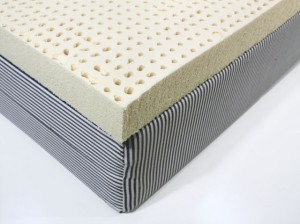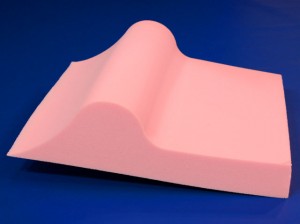Why You Should Add a New Mattress to Your Spring Cleaning To-Do List
The snow is melting, birds are chirping, and the days are lasting longer. That can only mean one thing: spring is well on its way! After a historically brutal winter that turned “Winter Vortex” into a stomach-churning phrase, springtime is being looked forward to more than it has been in years.
With the transition of the seasons come the traditions we welcome back into our lives: blossoming gardens, the crack of the bat and pop of the mitt, and spring break. However, not everything is as eagerly anticipated as white-sand beaches and baseball bleachers. In fact, the biggest spring tradition very well may be the least pleasant: spring cleaning.
What makes spring cleaning so much worse than run of the mill tidying is the “nesting” mentality winter often forces us into, especially when weather keeps us inside even more than normal. It’s important to do a deep clean, top to bottom, as part of the cabin fever treatment process, if only for the fresh-start-feeling it provides, to say nothing of the actual necessity of cleaning up your home.
And since you’ll already be chipping away at a longer-than-usual to-do list, it only makes sense to add on some of your big-picture cleaning and improvement projects as well. One such item worth including in your end-of-winter chores is assessing your bedding, and making a decision as to whether you would benefit from a mattress replacement.
Setting the comfort, support, and sleep benefits of a new bed aside for a second, there is a big reason mattress replacement makes sense during spring cleaning. After all, if you’re giving a deep cleaning to your whole home, from linens, to carpets, to furniture, there’s no reason to exclude your bedding. What it comes down to, comfort and support aside, is the legitimate fact that an old mattress may be contributing to in-home allergies.
Unless they have been encased in a sealed hypoallergenic mattress cover since the day they were bought, traditional innerspring mattresses can eventually turn into an allergy epicenter; one you spend a third of your day in direct contact with. What’s the issue with them, then? Dust mites.
Before continuing, it’s important to understand that dust mites in the home are not a reflection of personal hygiene. These microscopic mites are present virtually anywhere humans and animals reside. Fortunately, they do not directly impact humans in the sense that they don’t bite or sting in the way other problematic creatures do. The problem they present is an indirect one, in that the waste they produce and their bodies after they die are agitating to humans, and can result in allergy symptoms like itchy eyes, sneezing, runny noses, and more.
The issue with traditional mattresses is that they represent the ideal home for mites. A warm, humid environment with a constant food source is just what they want, and with the heat and moisture our bodies produce, as well as the 1/5 of an ounce of skin our bodies shed every week†, a mattress may as well be a resort. With the fabrics and open space a traditional mattress contains, there is plenty of room to contain mites, and the dust they thrive on.
It would seem like a simple thing to avoid, but mattresses are rarely thought of as allergy sources, compared to more “obvious,” traditional sources, like old carpeting for example. That, in addition to the fact that allergy symptoms are so run-of-the-mill, it’s difficult to point to them and say they’re mattress-caused. This is why, even for mattresses that are still physically sound, considering replacement around seven years is a good benchmark, due to the irritants they can contain and general wear and tear. With that in mind, doesn’t it seem to make sense to include your mattress as part of your spring cleaning?
If you do come to the conclusion that you would benefit from a new mattress, whether it’s due to allergy issues or because it’s simply time from a sleep-comfort perspective, there are options that can help ensure your next purchase will have less of an impact on your health than your previous one.
Foam bedding is one of the best ways to combat dust mites and the allergy symptoms they produce, due to the material’s structure and the hypoallergenic formulation of some styles. On a surface level, foam mattresses are a solid material, compared to the open areas of space in a traditional mattress. This means there are exponentially fewer areas for mites to reside, as well as dust to settle. Dust mites will also not eat foam, so the bed itself will not be an alternative food source.
In addition to the structural benefits of open-cell foam, particular foam varieties are designed to be hypoallergenic as well, offering additional help combating irritation. The Foam Factory carries three densities of memory foam – 3LB ViscoSAVER, 4LB ViscoPLUSH, and 5LB ViscoMAX – and all are hypoallergenic bedding options. They are also used to produce numerous products in addition to mattresses, including toppers, pillows, and cushions. The Foam Factory also offers 100 percent all-natural Dunlop latex that is both hypoallergenic and anti-microbial, capable of inhibiting the presence of mold or mildew. These materials, in addition to being good health-wise are also incredibly comfortable and supportive, excellent for helping you get the sleep you need. Additionally, hypoallergenic mattress covers have proven to be effective as well, as dust and mites are unable to gain access to your bedding.
Ultimately, spring is a time of renewal. This can mean many things, but if you have a chance to renew your health, it should be done. If allergies are holding you back from living your life the way you want, your bedding may to be blame, so adding a mattress replacement to your spring cleaning may be one chore you’ll be glad you took care of this year.
† Source: http://lancaster.unl.edu/pest/resources/dustmites311.shtml
Tags: Hypoallergenic, Latex Foam, Memory Foam
Posted in Mattresses




Leave a Reply